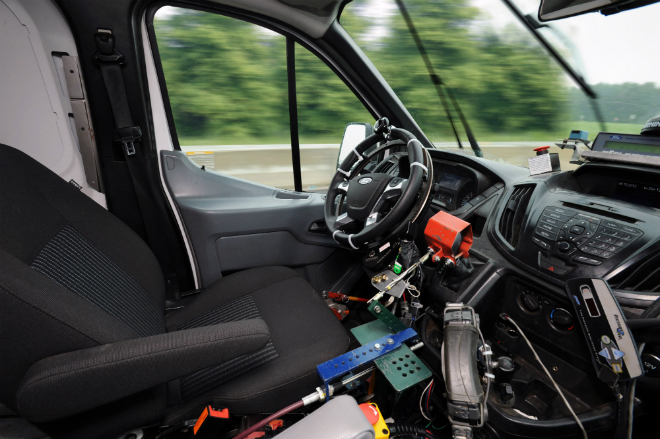Robots Take the Keys at Ford’s New Test Track
When it comes to testing a new line of trucks, it shouldn’t come as a surprise that automakers such as Ford aren’t afraid to be tough on their latest models. But separating the pounding the trucks can take from the test driver can get a bit tricky, which is why Ford has recently handed the keys over to robots instead of flesh-and-blood drivers.
 The robots and additional automation technology have already taken to the roads at the company’s Michigan Proving Grounds in Romeo, Michigan to help the trucks undergo more frequent tests than were previously possible.
The robots and additional automation technology have already taken to the roads at the company’s Michigan Proving Grounds in Romeo, Michigan to help the trucks undergo more frequent tests than were previously possible.
The increased frequency of the tests helps Ford to cram ten years’ worth of extreme wear and tear into a vehicle by lining its track with speed bumps, metal grates, potholes, and a number of other conditions that can be strenuous on the spine. As a result, drivers are limited to one test drive per day.
“Some of the tests we do on our commercial trucks for North America are so strenuous that we limit the exposure time for human drivers,” explains Dave Payne, manager of vehicle development operations at Ford. “The challenge is completing testing to meet vehicle development time lines while keeping our drivers comfortable.”
Understandably, the issue of safety won out, and Ford opted for test drivers who wouldn’t be endangered by stint of rough driving. And as you might expect, navigating a demanding test track in both on and off-road conditions isn’t something that current self-driving technologies are cut out to handle. So Ford turned to Utah-based Autonomous Solutions Inc, who helped them to develop the ideal robot driver for the job.
The result is a system of cameras, sensors and GPS that monitors everything about the trucks’ performance down to the inch. If anything unexpected happens on the track, such as a person, vehicle or animal jumping out in front of the truck’s path, the vehicle will automatically stop in its tracks. And just in case that isn’t enough, if the vehicle were to stray from its pre-programmed route, a remotely stationed engineer can take over the truck to put it back on course.
As for the displaced drivers, no jobs have been lost. Instead of whipping around the track, Ford says that they’ve been reassigned to everything from assessing noise levels to vehicle dynamics testing.










